The mist lifting off the water of the slow-moving creek that meandered through the Big Thicket National Preserve added to my mounting anxiety. Not only was I about to board a kayak for the first time since back surgery completely rewired my balance and my confidence, but the rusty, brown water hid whatever lurked beneath.
As my friend Rob McConnell readied his gear in his trusty canoe, I stood on the sandy banks of the stream, watching spotted gar breach and grab gulps of thick, muggy East Texas air, and I was certain that the big, toothy fish weren’t alone. This particular creek gets some springfed water input that keeps it cooler than other nearby waterways, and Rob told me that we wouldn’t have to worry about alligators or mosquitoes—the two biggest antagonists in any good Southern river tale. But after I dipped a toe into the quickly deepening water at the put-in, I declared it perfectly warm enough for gators. And snakes. And anything else the imagination might conjure up. I consciously blocked the image of the Swamp Thing from entering my brain. No need to put that out into the universe.
Oddly, Rob was right about the bugs. In the predawn fog, I hadn’t encountered a single mosquito. Mark one down for the good guys. Nevertheless, I was apprehensive.
It didn’t help, either, that my last sojourn on a borrowed kayak ended badly—the seal on the boat was faulty and once it took water into the kayak’s hollow center, it became virtually unnavigable. I was forced to limp back to the marina, straddling the boat as I navigated bull shark-infested canals.
So I was … tentative. Honestly, the back surgery was a big deal. Having three vertebrae fused is never really a small “procedure.” The aftermath continues. I don’t have the continuous pain that used to shoot down from my sciatic nerve, through my left butt cheek and zip down my leg into my big toe. Not anymore. But my balance is a bit off, even now, more than two years after the stitches came out. I’d elaborate, but suffice to say, sliding into a pair of boxer briefs, depending on the morning, is much more exciting than it used to be.
Rob declared his canoe ready, so I slipped two-thirds of the kayak into the water, and plopped down on the seat. With a little thrust, I was floating. And I was … twitchy.
And twitchy is not what you need to be in a kayak. Twitchy leads to overcorrecting, and overcorrecting leads to becoming the victim in a terrifying reptilian death roll. Perhaps that’s overly dramatic. But, again, that’s where my brain goes.
I made a couple of tentative paddle strokes, and the little kayak responded nicely.
“Relax,” I muttered under my breath. “It’s going to be fine.” And, generally speaking, it was.
“We’re just going to paddle through this deep stretch,” Rob said, pointing downstream through the Stephen King-worthy pre-dawn mist. “Then there’s a really nice sand bar where we can stop and fish.”
And the fish, at least to me, were the best part of what I was hoping to see on this adventure. We were after native spotted and white bass and a host of native sunfish often lumped into the “bream” or “bluegill” category in this part of the world. Rob told me we might have chances at spotted, long-nose and even alligator gar, and maybe even a catfish or two, but realistically, the bass and panfish were the “dependable” targets. Think of these fish as the East Texas answer to Appalachian brook trout, or Rocky Mountain backcountry cutthroats. They’re underappreciated and largely ignored by the bulk of the recreational angling community. They hang on in the froggy water of the Big Thicket and throughout the piney woods of the region, in spite of about 200 years of development at the hands of European Americans.
This creek, I later learned, is hugely popular with the recreational paddling crowd that lives and works around the city of Beaumont — it’s not a secret destination for kayakers and canoers who want to see some of the last truly wild country in East Texas. And it’s public—it’s managed by the U.S. Park Service. The Big Thicket National Preserve consists of 113,000 acres of public land, including stretches of several small to medium-sized creeks and a good percentage of the lower Neches River.
Local guide Gerald Cerda, who runs Big Thicket Outfitters, has been helping paddlers move deeper and deeper into the Big Thicket’s swampy reaches for the better part of 40 years. He’s not an angler, but he is the resident expert on how to get into the backcountry and what to expect when you’re there. The cypress and tupelo forests of the swamp are home to some of the last old-growth trees of that variety found anywhere in the United States.
“This is as wild as it gets in Texas,” Cerda explained as he and I enjoyed a leisurely Tuesday on his pontoon boat, cruising through the swamp along the lower Neches. Like any good local who grows up loving and appreciating his own “home place,” Cerda speaks of the Big Thicket with reverence. The snakes and gators; the herons, egrets and the ospreys; and the majestic and giant cypress trees, some which have been standing for more than 2,000 years; these are his business partners in the Big Thicket. The swamp full of cypress knees and submerged wood, well, that’s his office.
“I love when I get to show this place off,” he said. “When people come down here, I ask them to compare what they saw after a day on the water with other places they’ve visited, and sometimes, I’m surprised when they tell me how much they love this place.”
No, the Big Thicket doesn’t have the overt majesty of the Tetons, nor does it have the easy encounters with large wildlife that a place like Yellowstone can boast. Instead, it offers a more hands-on opportunity for anyone who can paddle a kayak or ride shotgun on Cerda’s pontoon boat to get to see and understand a land- and waterscape on a much more intimate basis.
“You can get out in it,” Cerda says. “You’re not gonna get tired of driving and looking out the window. You can actually be a part of it.”
Granted, other national park units offer the chance to “go and do,” much like the Big Thicket, but this relatively small stretch of public real estate hidden in the corner of Texas is a primal place. Hundreds of years ago, it was oft-visited by the Caddo and Atakapa Indian tribes, but it was so inhospitable, these people were only visitors, entering the region to hunt and forage, but never settling. In the 16th Century, the Spaniards arrived as they explored much of the wild lands of the Gulf Coast. They, too, were only visitors. The first real human settlers didn’t arrive in the Big Thicket until the early 1800s — the Coushatta and Alabama tribes moved into the Big Thicket to avoid clashes with European settlers as Manifest Destiny played out across the continent. These tribes still have treaty rights to parts of the region.
During the Civil War, the impenetrable marshes and forests of the region provided a refuge for Texans who refused to fight for the Confederacy. These settlers made a go at gentrifying this place, and their predecessors still live along the Neches and deep into the forests where four of the five varieties of carnivorous plants native to North America still live.
But for anglers, the Big Thicket still remains something of a frontier. As McConnell and I paddled our way down the canopied creek a couple days before my boat trip with Cerda, into the heart of the preserve, I quickly became enamoured by what has somehow escaped the worst of the Texas sprawl, both when it comes to what has become of the land, but also what has become of its waters. Perhaps that’s because it’s so boggy and muddy and imposing that it wasn’t deemed worth the effort to civilize.
And the lack of civilization is what keeps fish like the native spotted bass and the long-ear sunfish happy and healthy, and living among the murk alongside a host of intimidating fauna. In addition to the occasional gator, the preserve is home to four species of venomous snakes — cottonmouths, copperheads, timber rattlesnakes and coral snakes. And trust me, when you’re inches from the rusty, brown water, casting a fly at structure hoping to coax a gorgeous little bass out of a snag or a root ball, damn never everything you see looks like it could very well be a venomous snake.
The spotted bass are the all-stars of the Big Thicket fishery. These aren’t the big bucket-mouths that have been transplanted across the South. They aren’t the fish that inspire $1 million tournaments and I’d wager nobody has dropped $70,000 on a boat just to chase spotted bass. Instead, these crafty offshoots from the ubiquitous “largemouth” branch of the bass family tree are more tuned into the dark water of the preserve's many small creeks and bayous. They love to look up — every bass I was fortunate to catch that day with McConnell hit a Gurgler. And they weren’t big by bass standards — McConnell was over the moon after catching one spotted bass that might have measured over a foot long. Most were in the 8- to 10-inch range.
This small-water variety of fishing wasn’t unfamiliar to either McConnell or to me. Rob grew up fishing the brook trout streams of western Pennsylvania and spent time in his formative years in the Bitterroot Valley of western Montana. His job as a geologist is what brought him to Texas, where he works for an oil company. I spent a few years living in East Texas, but most of my fishing as a kid was done on high-country trout streams in Colorado. Even today, I much prefer to chase trout in the small streams around my eastern Idaho home.
Employing much the same kind of angling that I’m used to, but in a soupy Texas bayou, was a real kick.
It seemed that wherever a noticeable current met obvious structure in the creek, bass were there and they were, at the very least, curious as to what I was skittering across the surface. And when they decided to hit a fly, they were enthusiastic. Spotted bass are appreciable leapers, and on light fly tackle (I fished most of the day with a 3-weight and threw a size 6 Gurgler at them), they were a lot of fun. And, I might add, we didn’t see another angler all day long— definitely not a Texas expectation.
Yes, I saw a host of bigger fish — I counted half a dozen long-nosed and spotted gar climbing the water column to slurp in a gulp of air, only to ghost back into the depths. No amount of casting big, ropy flies would lead to a hookup. But they’re there, and one day, I might get lucky and connect.
We floated and fished from just before sunup and into the morning, when the summer heat burned off the mist and left us both drinking water at every opportunity. Finally, around noon, while fishing a sandbar, I looked over and saw McConnell up to his neck in the creek — he’d hooked a branch across the channel and was swimming to go and get it.
I debated. Should I help, or should I just pull out my camera and get the gator attack on video. Before I could make up my mind, he’d retrieved his two-fly rig and was walking out of the water like the fabled Skunk Ape, a big grin across his face. Then, unceremoniously, he reached into his canoe, grabbed a small cooler and sat down in the sand, a good three feet off the bank.
“You should do this,” he said, popping the top of a frosty Lone Star. “This feels really great.”

I’ll admit, I had ventured into the creek, but only about calf-deep. When I couldn’t see my feet, I figured I’d gone deep enough. But the sticky sunshine that cut through the canopy was sapping my Rocky Mountain energy, and the thought of a cold beer was enough to get me to wander over and sit down in the creek next to Rob.
He was right about the water’s temperature. In August, Texas impoundments felt more like bathwater than refreshing pools. But this creek was much cooler than I expected, particularly after the day’s heat arrived as the sun climbed higher into the sky. I sat there with Rob, knocking back a beer and trying not to get too freaked out when the creek’s healthy population of blacktail shiners nibbled at the hairs on my shins.
We eventually hopped back into our small boats and paddled down to the take-out just as the day was about to get unbearably hot. We were spent — the heat really takes it out of you, even after you come to grips with getting into water where your feet disappear into the murk after a foot or so. And, as the day got hotter the fishing noticeably slowed. By 3 o’clock, we were diving into a plate of Tex-Mex burritos in the little town of Silsbee, and I was contemplating a return trip to this quiet little retreat in the not-so-quiet Lone Star State.
It felt a bit odd to leave Idaho at the beginning of what many of us call “hopper season,” but this summer has been so hot and dry in the West, that it just feels wrong to pester the trout when a single encounter with a size 10 Fat Albert could kill them. But in East Texas, where heat and humidity are constants from May through October, the spotted bass are a solid alternative.
I can’t wait to go back and do it again.






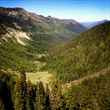


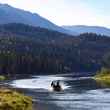
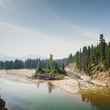


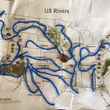
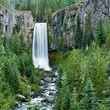



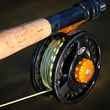
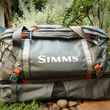



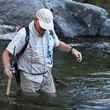




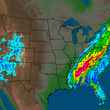

Comments